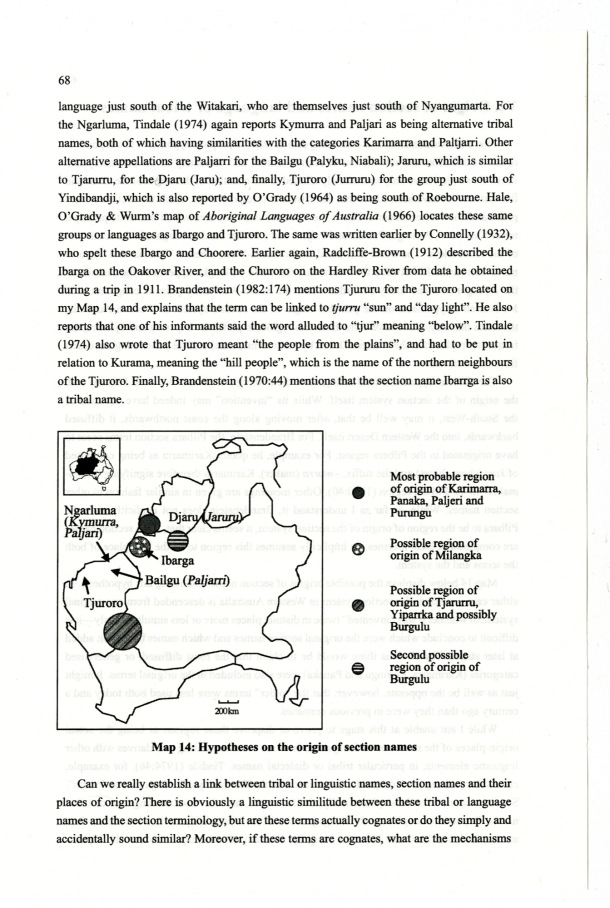|
| 
[Note: this transcription was produced by an automatic OCR engine]
68
language just south of the Witakari, who are themselves just south of Nyangumarta. For
the Ngarluma, Tiridale 1974 again reports Kymurra and Paljari as being alternative tribal
names, both of which having similarities with the categories Karimana and Paltja.rri. Other
alternative appellations are Paljarri for the Bailgu Palyku, Niabali; Jaruru, which is similar
to Tjarurru, for the Djaru Jam; and, finally, Tjuroro Jurruru for the group just south of
Yindibandji, which is also reported by O’Grady 1964 as being south of Roeboume. Hale,
O’Grady Wurni’s map of Aboriginal Languages of Australia 1966 locates these same
groups or languages as Ibargo and Tjuroro. The same was written earlier by Connelly 1932,
who spelt these Ibargo and Choorere. Earlier again, Radcliffe-Brown 1912 described the
Ibarga on the Oakover River, and the Churoro on the Hardley River from data he obtained
during a trip in 1911. Brandensteiri l982:174 mentions Tjururu for the Tjuroro located on
my Map 14, and explains that the term can be linked to tjurru “sun” and “day light”. He also
reports that one of his informants said the word alluded to “tjur” meaning “below”. Tindale
1974 also wrote that Tjuroro meant “the people from the plains”, and had to be put in
relation to Kurama, meaning the “hill people”, which is the name of the northern neighbour
of the Tjuroroi Finally, 3. denstein 1970244 mentions that the section name Ibarrga is also
a tribal name.
Most probable region
. of origin of
Pannka, Paljeri and
Punmgu
9 Possible region of
origin of Milangka
Possible region of
. origin of TJarnrru,_
Yiparrka and possibly
Burgulu
Second possible
Q region of origin of
Burgulu
Map 14: Hypotheses on the origin of section names
Can we really establish a link between tribal or linguistic names, section names and their
places of origin? There is obviously a linguistic sirnilitude between these tribal or language
names and the section terminology, but are these terms actually gnates or do they simply and
accidentally sound similar? Moreover, if these terms are cognates, what are the echanisms
|